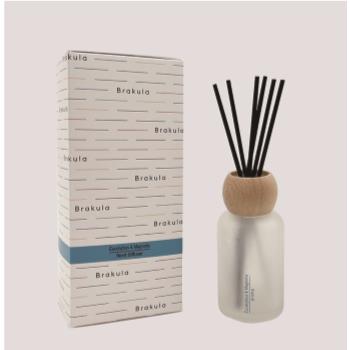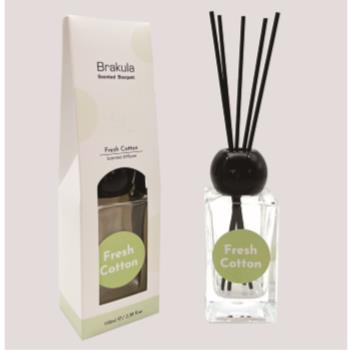How can Singapore and the Incense Master restore Chinese ancient legal fragrances?
For thousands of years, the essence of fragrance has adorned human culture, offering one of life's most beautiful and captivating experiences.
In the ancient Chinese text "Shuowen Jiezi," fragrance is described as "pleasant aroma," and "xin" denotes "fragrance that can be smelled from afar."
The culture of incense embodies the artistry of scent, awakening various beautiful sentiments within us.
Different ingredients, aromas, medicinal properties, and perfumers all contribute to the diverse spiritual experiences associated with incense.
Throughout history, descriptions of incense and its virtues have been abundant in poetry and literature, from the origins in the Han Dynasty of China to the flourishing periods of the Tang and Song Dynasties.
The deeper one delves into the study, the more one can glimpse the profound spiritual world that ancient people associated with incense.

Dr. Li Fupeng, a renowned perfumer from Singapore (holding a Ph.D. in Life Sciences from Nanyang Technological University), is a storyteller of fragrances.
He listens and perceives the messages carried by scents with both heart and body, expressing them through the art of perfumery.
By utilizing quality materials and meticulous craftsmanship, he allows more people to experience fine fragrances.
The ancient Chinese method of incense-making involves several key steps, including ingredient selection, processing, blending, and aging.
The first step, ingredient selection, necessitates finding high-quality materials suitable for the specific incense formulation.
The core of traditional incense lies in its ingredients, determining the aroma's characteristics, therapeutic effects, as well as the grade and quality of the incense.
Incense ingredients are closely related to traditional Chinese medicinal herbs.

Those who frequently purchase Chinese herbs may notice variations in quality among different vendors. High-quality herbs are often scarce, as most top-grade materials are exported to countries like Japan, South Korea, and Southeast Asian nations.
Additionally, many rare herbs, such as "natural borneol," are challenging to find in the domestic market, with most available products being chemically produced.
Throughout history, Singapore has been a significant trading hub for spices and fragrances, facilitating the exchange of precious ingredients.
For instance, Singapore serves as a major distribution center for agarwood, with billions of dollars' worth of agarwood-related products traded here annually, along with many other high-quality aromatic substances.
Dr. Li emphasizes that the foundation of incense research lies in acquiring and selecting high-quality ingredients.
"We source some high-grade ingredients from countries like Japan, the Middle East, and India. These ingredients are often not produced domestically and lack corresponding standards," Dr. Li explains.
Dr. Li has long been deeply fascinated by Chinese traditional culture.

Through his research, he discovered that, similar to the ancient method of pill-making, the key to crafting ancient-style incense lies in mastering the processing methods and the sequence of ingredient addition for different materials.
However, these critical production processes have nearly been lost to history because incense formulas are essential survival tools for each incense-making family, typically passed down only to male heirs and seldom publicly documented.
Due to recent historical events, few complete records remain. Most incense formulas found online or in ancient texts primarily list ingredient proportions without specific production methods.
In his earlier attempts at incense-making, Dr. Li encountered numerous challenges. Through relentless searching and visiting heritage bearers, he finally uncovered some incense formulas with detailed production processes.
Coupled with years of research and testing, he learned how to process ingredients for incense-making.
Ultimately, based on his understanding and research of ancient methods, he has revived some ancient incense formulas inherited from the Ming Dynasty. These incenses not only boast elegant fragrances but also serve functional purposes.

"Like medicine, incense has its dangers and benefits. Processing aims to reduce toxicity and enhance efficacy, facilitating better absorption by the human body," Dr. Li notes.
"For example, agarwood, originating from tropical regions, carries a hot and dry nature. Excessive direct inhalation may induce a sensation of heat. Hence, in ancient times, agarwood was always processed before being used in incense-making."
The intricacies involved are challenging to articulate in mere words. It's a labor of love, concealed beneath the surface, all internal effort.
Sometimes, the complete production process of a single incense may take several months or even years.
"Take one finely crafted incense, for example. It not only allows you to perceive a diverse range of fragrances but also subtly infiltrates your consciousness, leaving behind beautiful impressions, as if you were immersed in an environment where orchids bloom," Dr. Li remarks.
"The most challenging aspect of incense-making is self-cultivation, maintaining acute senses at all times. For instance, in France, 'noses,' or top perfumers, need to lead a pure lifestyle for their bodies to be sensitive enough to discern the grades of fragrances. Personally, I have been a vegetarian for nearly 10 years," Dr. Li admits.

The ability to discern the quality of incense ingredients is a fundamental skill. However, the true challenge for perfumers lies in painting images in the minds of those who smell the incense.
Humans have six senses - sight, hearing, smell, taste, touch, and intuition - and they are interconnected. For example, the smell of spice may evoke the color red, while the scent of acidity may conjure images of green. The art lies in allowing people to immerse themselves in a visual experience when they smell the fragrance.
Regarding the evaluation of incense, it transitions from "flavor" to "charm," and from "charm" to "meaning."
The lingering imagery brought forth by the fragrance is the so-called "charm." For example, tea can leave the fragrance of flowers in your mind, representing a deeper level of charm.
As for the "meaning," it embodies the essence bestowed by perfumers. In ancient times, incense was accompanied by a strict set of etiquette and connotations. The "Record of Rites" states, "When Yin and Yang harmonize, all things flourish."

Therefore, as the ancients believed: crafting incense requires a combination of heart and medicine, aiming to please the senses; harmonizing with the four seasons, following the principles of Yin and Yang; refining the nature of various herbs, harmonizing Heaven and Earth within; borrowing the cultural zeitgeist of the era, restoring righteousness to all beings; gathering the pure Yang of Heaven and Earth, supporting the innate nature of humanity.
Upon reflecting on traditional crafts, they are a journey from art to Tao, and the artisan's ingenuity stems not only from their hands but also from their relentless pursuit of the underlying "Tao."
"A master once told me three words: 'Spirit, Entrust, Emerge.' When you persistently pursue, you can enter the river of history, converse with ancient sages, and finally bring that enlightenment back to real-life," Dr. Li remarks.
This, perhaps, encapsulates the responsibility carried by incense-makers.



